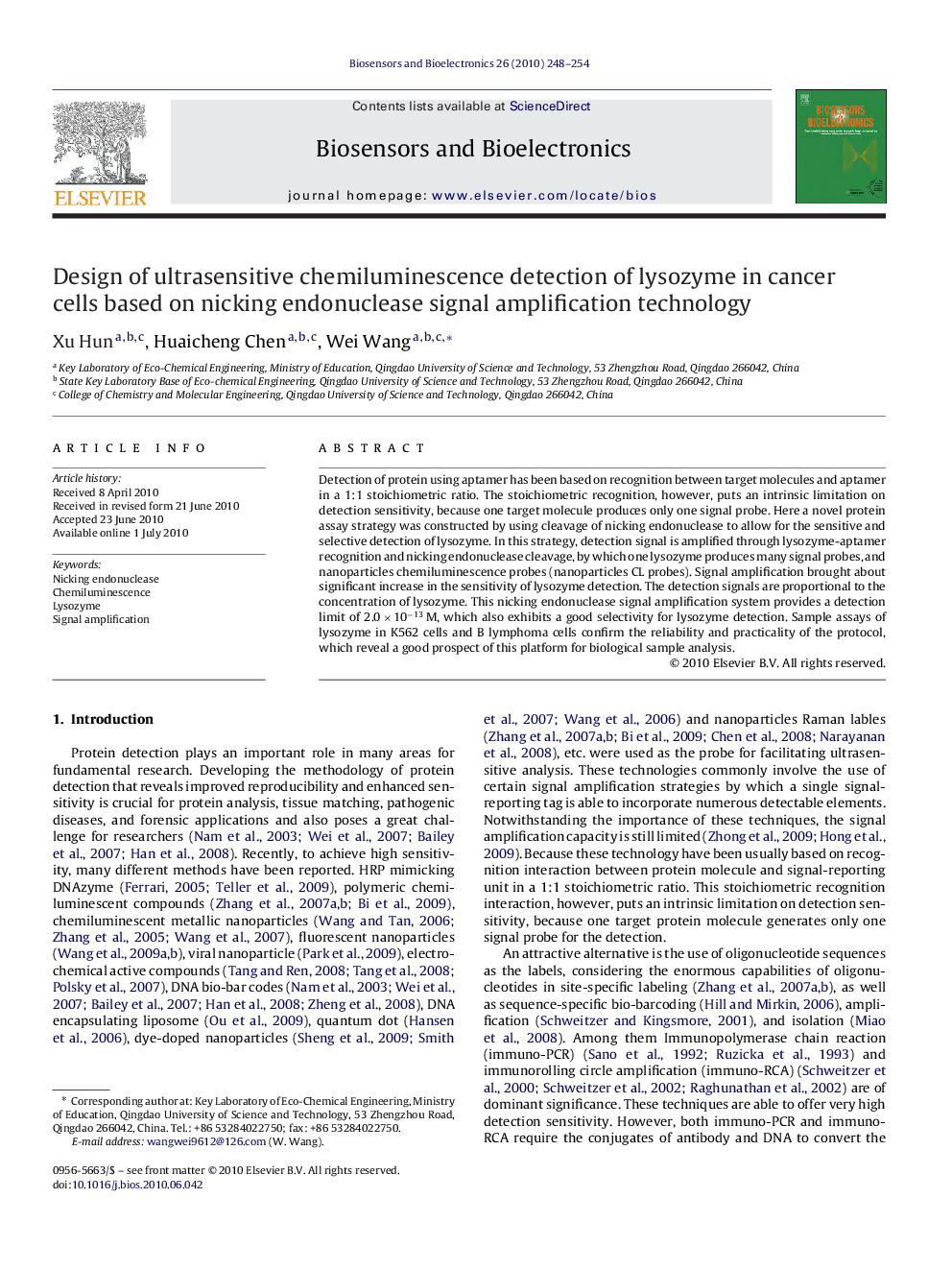| Article ID | Journal | Published Year | Pages | File Type |
|---|---|---|---|---|
| 867962 | Biosensors and Bioelectronics | 2010 | 7 Pages |
Detection of protein using aptamer has been based on recognition between target molecules and aptamer in a 1:1 stoichiometric ratio. The stoichiometric recognition, however, puts an intrinsic limitation on detection sensitivity, because one target molecule produces only one signal probe. Here a novel protein assay strategy was constructed by using cleavage of nicking endonuclease to allow for the sensitive and selective detection of lysozyme. In this strategy, detection signal is amplified through lysozyme-aptamer recognition and nicking endonuclease cleavage, by which one lysozyme produces many signal probes, and nanoparticles chemiluminescence probes (nanoparticles CL probes). Signal amplification brought about significant increase in the sensitivity of lysozyme detection. The detection signals are proportional to the concentration of lysozyme. This nicking endonuclease signal amplification system provides a detection limit of 2.0 × 10−13 M, which also exhibits a good selectivity for lysozyme detection. Sample assays of lysozyme in K562 cells and B lymphoma cells confirm the reliability and practicality of the protocol, which reveal a good prospect of this platform for biological sample analysis.
